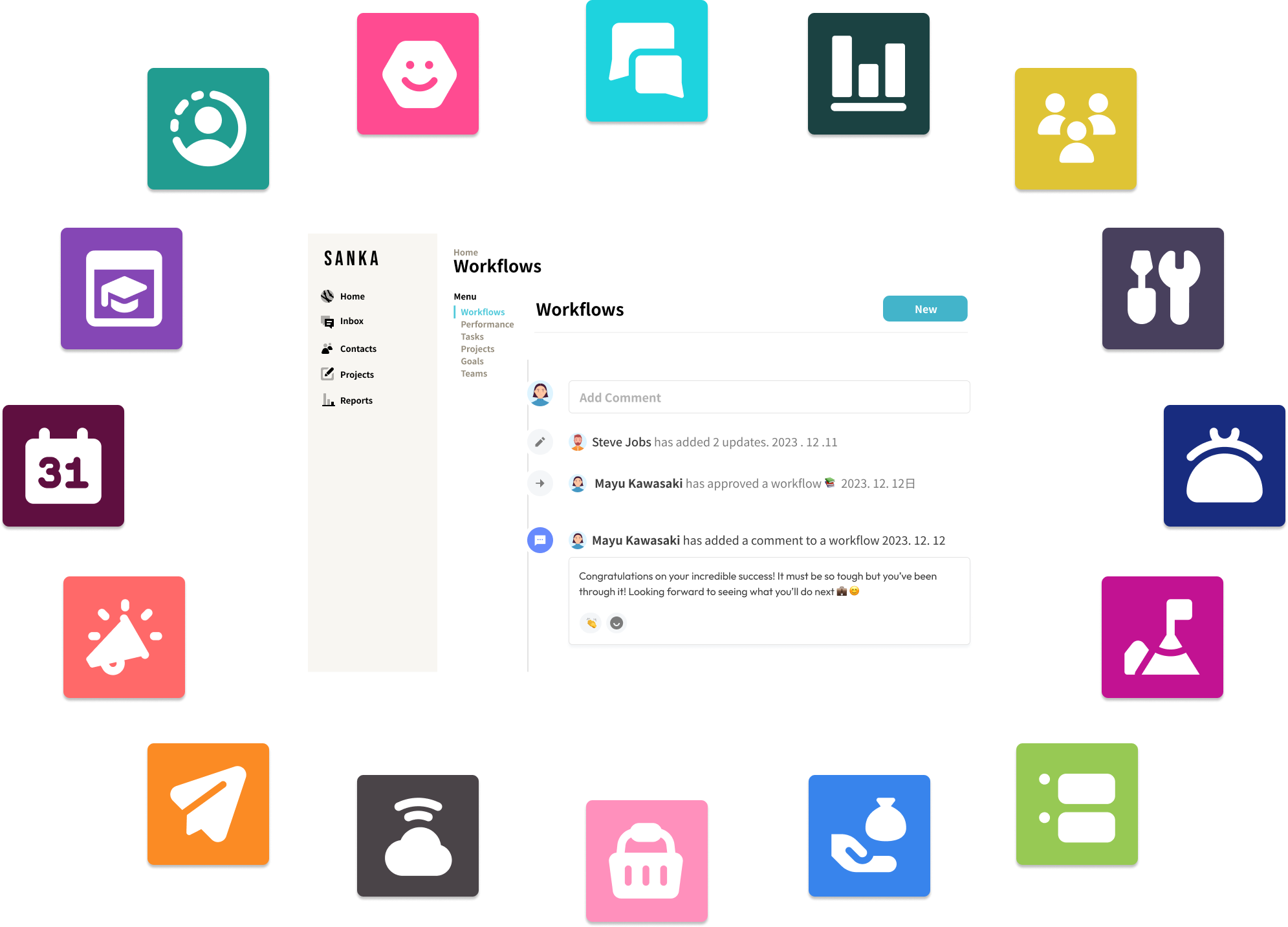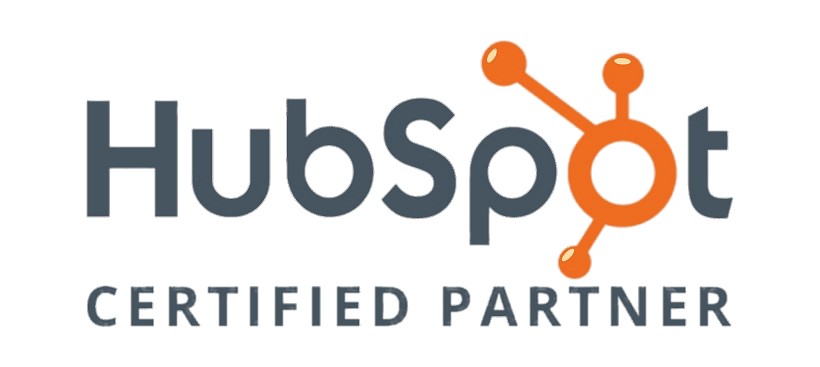Table of Contents:
- What is a Digital Transformation Strategy
- 4 Main Themes of a Digital Transformation Strategy
- Best Strategies for Digital Transformation
Introduction
In today's digitized world, the phrase 'digital transformation' has become more than just business jargon.
It's an inherent reality for businesses looking to stay relevant and prosperous in an ever-evolving landscape of technology and customer expectations.
However, steering an organization through digital transformation can be a daunting task.
Indeed, a McKinsey report suggests that less than 30% of digital transformations succeed fully. To guide your organization through this journey successfully, you will need a robust strategy.
This blog will offer helpful insights into practical strategies for digital transformation that you can adapt to suit the unique needs of your business.
What is a Digital Transformation Strategy
A digital transformation strategy refers to the blueprint or plan for how a business will incorporate digital technology into all facets of its operations to improve processes, enhance customer experiences, and outpace competitors.
In essence, it centers on leveraging digital tools and technologies to transform existing business activities, culture, and customer experiences to meet changing business and market requirements.
Digital transformation is not merely about digitization or the conversion of analog processes to digital ones; instead, it's about rethinking and reshaping how your business operates and delivers value to customers in the digital age.
4 Main Themes of a Digital Transformation Strategy
There are four main themes that form the foundation of a successful digital transformation strategy:
- Process Transformation: This theme involves reimagining and redesigning existing business processes to become more efficient, automated, and agile, leveraging digital technologies to enhance overall performance.
- Business Model Transformation: This theme focuses on adapting the organization's current business model to capitalize on digital opportunities, such as utilizing new revenue streams, enhancing customer experience, and leveraging digital platforms and partnerships.
- Domain Transformation: This theme is about expanding into new markets, industries, or product lines by leveraging digital capabilities. It may include creating new digital products or services, expanding into untapped markets, or repositioning the organization for future growth.
- Cultural Transformation: This theme involves fostering a digital-first mindset within the organization, promoting collaboration, innovation, and adaptability. By embracing a digital culture, organizations can better handle the fast-paced nature of digital technologies and navigate the risks and opportunities inherent in digital transformation.
These themes together form the backbone of a successful digital transformation strategy, with each theme playing a crucial role in driving an organization's growth and adaptation in the digital age.
Best Strategies for Digital Transformation

#1 Understand Your Customer
In the Age of the Customer, putting the customer first is no longer a business tactic—it's a prerequisite for success.
To ensure a successful transformation, businesses need to understand their customers deeply, map out their customer journey, and constantly innovate to improve customer experiences.
Practical Tips to Understand Your Customers
- Gather Feedback: Collect customer feedback through online surveys, focus groups, or customer interviews. This will provide you with valuable information about how customers perceive your brand, products, or services. Also, be sure to monitor online reviews and social media platforms.
- Analyze Customer Data: Use data analytics tools to analyze customer-related data, such as purchase history, browsing habits, and demographic information. This analysis can help you uncover trends, segments, and patterns that can inform decision-making.
- Build Customer Personas: Develop detailed customer personas by compiling data about your target audience. This will help you visualize your customer's preferences, problems, and aspirations, allowing you to tailor your offerings accordingly.
- Monitor Customer Interactions: Track every interaction between customers and your business, be it through phone calls, emails, social media, or in-person meetings. This information provides valuable insights into customer preferences, pain points, and expectations.
- Map the Customer Journey: Clearly identify each step your customers take on their journey from awareness to conversion. This process will help you understand how customers interact with your brand, and identify any barriers to conversion or opportunities for enhancement.
- Empower Your Team: Train your customer support and sales teams to listen actively and empathetically to customers. This will help uncover meaningful customer insights and create a customer-centric culture within your organization.
- Benchmark Competitors: Analyze your competitors' marketing strategies, products, and services to understand how they cater to their customers. This can highlight areas where you are lagging behind or provide inspiration for innovations.
#2 Adopt a Data-Driven Approach
Leverage existing data to gain actionable insights about your business performance and customers' preferences.
Big data and data analytics provide the tools to identify bottlenecks, predict customer behavior, and make informed decisions.
Practical Tips to Adopt a Data-Driven Approach
- Collect and Organize Data: The first step in the data-driven approach is to collect the necessary data such as customer data (preferences, behaviors, feedback), operational data (process efficiencies, costs), and market data (trends, competitor analysis). To organize the collected data, you can use tools and platforms like cloud databases, data lakes, or data warehouses, which allow for data consolidation and efficient retrieval.
- Apply Data Analysis: Next, utilize data analysis to extract meaningful insights. Tools like Business Intelligence (BI) platforms and data visualization software can convert raw data into easily understandable charts, graphs, and reports, providing a macro perspective of the business and aiding in decision-making.
- Drive Decision-Making: Use the insights to drive strategic and operational decision-making. For example, if the data shows a particular product is not selling well in a specific region, the marketing strategy may need to be revisited for that region. If data shows bottleneck points in an operational process, the process should be optimized to increase efficiency.
- Implement Data-Driven Projects: Apply these insights in real-world projects. Let's say that an e-commerce retailer gathers and analyzes data to discover that a significant number of customers abandon their shopping carts when asked to create an account before checkout.
#3 Promote Collaboration and Innovation
Foster a digital culture that encourages collaboration, innovation, and flexibility within your organization.
This approach can promote the fluid exchange of ideas, remove operational silos and lead to pioneering breakthroughs. Use collaboration tools to facilitate seamless communication.
Practical Tips to Promote Collaboration and Innovation
- Building a Collaborative Culture: Creating an environment that fosters collaboration is crucial for the success of digital transformation efforts. For example, using channels on Teams or Slack allows stakeholders from different departments to engage in continuous, focused conversations around specific projects.
- Establish Innovation as a Core Value: This could be done by actively recognizing and rewarding innovative ideas and disruptive thinking. Holding regular workshops or ideation sessions where employees can present unique ideas encourages an innovation-oriented mindset. For example, Google allows its engineers to spend 20% of their working time on side projects, which has led to the creation of some of its popular products like Gmail and Google News.
- Encourage Cross-Functional Collaboration: This cross-functional collaboration can lead to comprehensive solutions, as each department or team brings a distinctive perspective. For instance, the marketing team's customer insights coupled with the technical knowledge of the IT department can lead to the implementation of customer-friendly tech solutions that drive revenue growth.
- Creating a Feedback Mechanism: Lastly, fostering innovation and collaboration requires a safe space for open feedback and continuous improvement. Solicit feedback regularly and implement changes as needed.
#4 Foster a Change Culture
Digital transformation is synonymous with change. Cultivating a change-friendly culture helps streamline the process, overcome resistance, and prepare employees for the continuous technological advancement characteristic of modern workplaces.
Practical Tips to Foster a Change Culture
- Encourage Openness to Change: Encourage employees to be open to changes brought about by digital transformation. This can often involve periodical workshops and training programs which can help to keep employees abreast of changing technologies.
- Lead by Example: Leadership should be the first to embrace the changing culture as they set an example for the rest of the organization. Leaders who are open to change and who continuously adapt to new technologies will inspire their teams to do the same.
- Involve Employees in the Process: Involve employees in the digital transformation journey. This can mean gathering employee input during planning stages, keeping employees informed of changes and progress, and carrying out regular feedback sessions throughout the process.
- Promote a Growth Mindset: Promote a growth mindset within the company, where challenges and obstacles are seen as opportunities to learn rather than insurmountable hurdles. Mistakes and setbacks should be part of the learning and evolution process.
#5 Invest in Training
Digital transformation often assumes employees adopt new technologies. Invest in regular training sessions to ensure employees adapt to new tools and can leverage their capabilities fully.
Practical Tips to Invest in Training
- Regular Skill Upgrades and Training: Implement training programs that boost employees' competency in new technologies and digital processes. Consider a mix of learning methods, like online courses, hands-on workshops, group training, and one-on-one coaching.
- Focus on Soft Skills: While technical skills are vital in navigating digital tools and platforms, don't overlook the importance of soft skills like problem-solving, communication, and adaptability. These skills help employees adapt to change and promote a culture of continuous learning and growth.
- Strategic Tech Training Based on Roles: Specific role-based training is also necessary - while high-level knowledge about digital transformation is required for all employees, deeper, more technical training may be required for specific roles.
- Offering Certifications: Offer or incentivize industry-recognized certifications. Not only can this increase employees’ motivation, but it can also bolster your organization’s reputation and customer trust.
#6 Plan Your Transformation Journey
Don't expect your entire business to transform overnight! Prioritize areas that will benefit most from transformation, build proof of concepts, learn from mistakes, make improvements, and gradually scale your initiatives.
Practical Tip to Plan Your Transformation Journey
- Define Clear Objectives: Whether it's enhancing the customer experience, improving operational efficiency, or creating new digital services or products, having defined objectives enables alignment across the organization.
- Prioritize Initiatives based on Impact: Use frameworks like Value/Affort or a simple Return on Investment (ROI) calculation to prioritize implementation.
- Prepare a Roadmap: Once the objectives are defined and prioritized, prepare a digital transformation roadmap. This roadmap should outline the planned projects, their timeline, expected ROI, the team members involved, and additional resources required.
- Review and Adjust: Digital transformation is often a dynamic process that requires vigilance and adaptation to ensure it remains aligned with your business goals. Regular reviews and adjustments to the plan could be needed as the journey progresses.
#7 Measure Success
Track your progress towards your digital transformation goals. This will allow you to measure the success of your digital initiatives and identify areas for improvement.
Remember, transformation is an ongoing journey, not a one-time project.
Practical Tip to Measure Success
- Define Key Metrics: Begin by clearly defining the key metrics that align with your digital transformation objectives, like customer experience, cost reduction, revenue growth, innovation, and employee engagement. Once these metrics are established, set quantifiable goals related to each.
- Set SMART Goals: Ensure that the goals you establish are SMART: Specific, Measurable, Achievable, Relevant, and Time-bound. This helps you to accurately track progress and make necessary adjustments to the digital transformation plan if required.
- Monitor Progress Regularly: Monitoring the progress of your digital transformation strategy must be ongoing. Track the key metrics regularly, addressing challenges or bottlenecks promptly.
- Compare with Industry Benchmarks: Compare your digital transformation efforts with industry benchmarks, both in terms of goals achieved and the time taken to achieve them. These comparisons offer an understanding of your organization's position in the competitive landscape.
#8 Partner with the Right Digital Experts
Partnering with experienced tech partners can provide your business with the necessary guidance, tools, and expertise.
The right partner will understand your digital vision, enhance your strategy, and help your business leverage best practices.
Practical Tip to Partner with the Right Digital Experts
- Identify Your Technology and Skill Gaps: First, identify the specific technology and skill gaps within your organization concerning your digital transformation objectives. This could be expertise in a new technology, understanding process reengineering, or change management guidance.
- Search for Digital Experts: Next, search for digital experts who can fill the identified gaps. This can include external consultants, specialized digital agencies, or software vendors who can provide the necessary expertise, platforms, or solutions.
- Evaluate the Experts: Evaluate your potential digital partners by examining their proven track records, industry experience, customer case studies, technical expertise, communication capabilities, and cultural fit with your organization.
- Foster Collaborative Relationships: Once you've chosen the right digital partners, create an environment that fosters collaboration, ensuring that both your internal team and the external experts work together effectively.
- Monitor Progress and Performance: Leverage the insights and recommendations they bring to your organization. Periodically re-evaluate the relevance of their expertise in light of your evolving digital transformation strategy.
Ready to kickstart your digital transformation journey and achieve more with less? Sanka is your ideal partner - offering customizable solutions, robust apps, and dedicated support.
Conclusion
The path to digital transformation is unique for every organization and necessitates a blend of technology, strategy, and culture.
It is an ongoing process that involves a significant shift in thinking, constant adaption, and a willingness to disrupt traditional business models for the promise of greater efficiency, customer satisfaction, and revenue growth.
An effective digital transformation strategy doesn't simply incorporate technology into existing structures but rather uses it as a tool to rethink and reshape business operations from the ground up.
It demands the integration of digital technology into all areas of a business, fundamentally changing how the organization operates and provides value to its customers.
The industry is shifting—stay ahead of the competition by embracing the power of digital transformation now!








